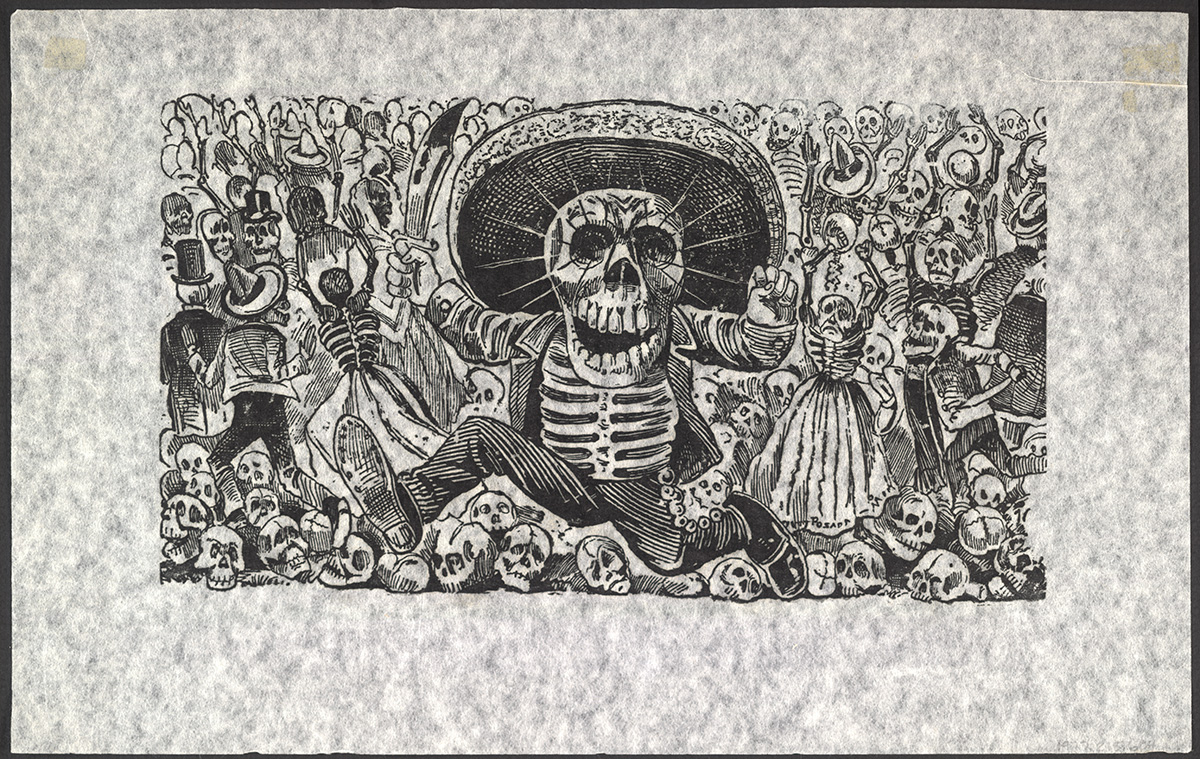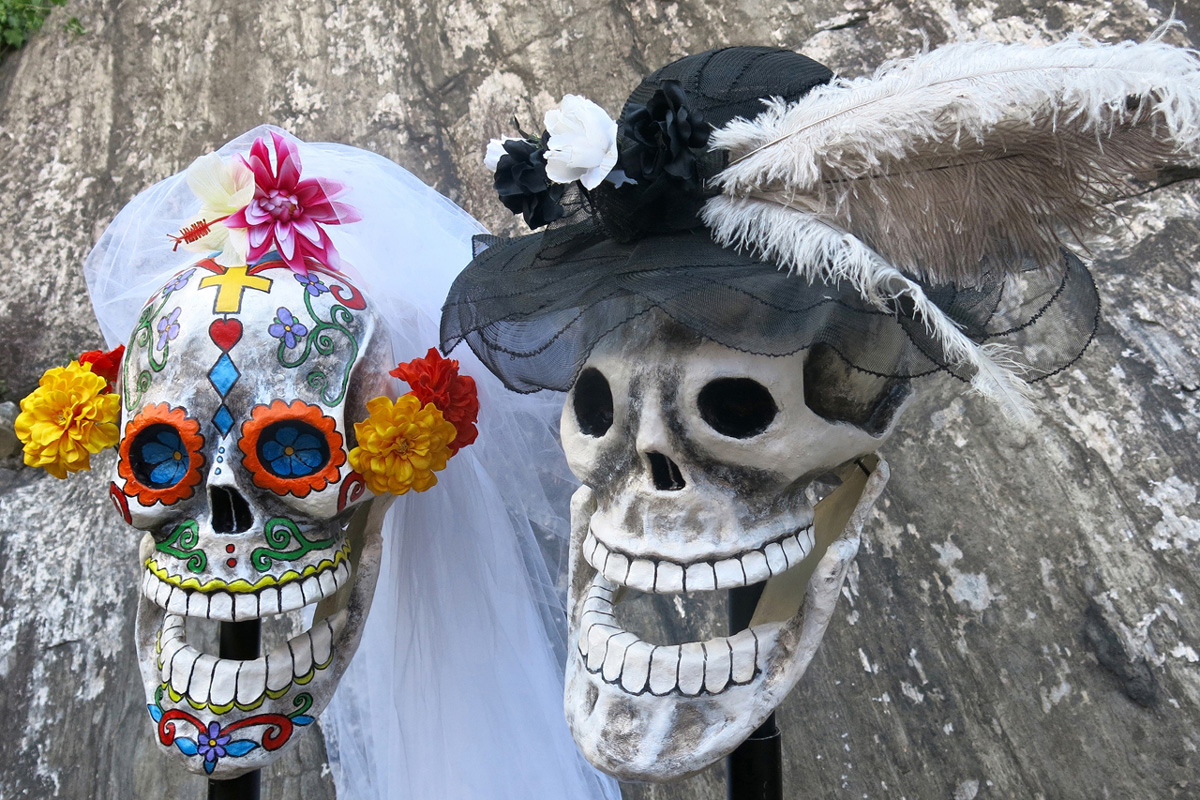La Catrina: Grande Dame of Día de los Muertos
Posted in History on October 21 2015, by Sarah Henkind
In celebration of Día de los Muertos, or Day of the Dead, on the weekends of October 24 & 25 and October 31 & November 1, Bronx-based artist Lucrecia Novoa and the Mascaraviva puppeteers parade her giant skeleton and La Catrina puppets throughout the Garden. Inspired by both the traditional and modern representations of the skeletal character, Lucrecia’s puppets—made especially for this occasion—provide the perfect photo opportunity and interactive experience. Catch them wandering throughout the Garden from 12 to 4 p.m.!
But who is La Catrina? The referential image of death in Mexico, it is common to see La Catrina featured in Día de los Muertos celebrations, where death is treated with familiarity and hospitality instead of dread.
La Catrina was originally drawn as a satirical cartoon (1910–1913) by famous Mexican printmaker and illustrator Jose Guadalupe Posada. The etching was intended to make fun of Mexican elite who were adopting European fashion and attitudes. Named “La Calavera Garbancera,” the image was meant to represent the large gap between social classes, and was inspired by Mictecacihuatl, the Aztec goddess of death and Lady of Mictlan, the underworld.
Here is an image of Posado’s La Calavera Oaxaqueña, which is similar in style to the Catrina:

Here is a sneak peak at Lucrecia’s interpretation of Catrina:

Posada’s creation might have given La Catrina her form, but it was Diego Rivera, muralist, and husband of Frida Kahlo, who named her. Diego’s mural, “Sueño de una tarde dominical en la Alameda Centra (Dream of a Sunday Afternoon in the Alameda Central)” (1946–1948), features an image of Catrina right in the middle of the artwork, next to Frida. Because of Diego’s popularity, La Catrina rose to fame, and is a now iconic representation of the Mexican willingness to embrace death- and to even laugh at it. After all, there is something a bit humorous, if also a tad creepy, about a skeleton dressed in opulent fashion. Images and more information on the mural can be found here.
We do hope you will come out to celebrate the lives of loved deceased ones, especially Frida Kahlo, as we prepare to say goodbye to the exhibition on November 1!
